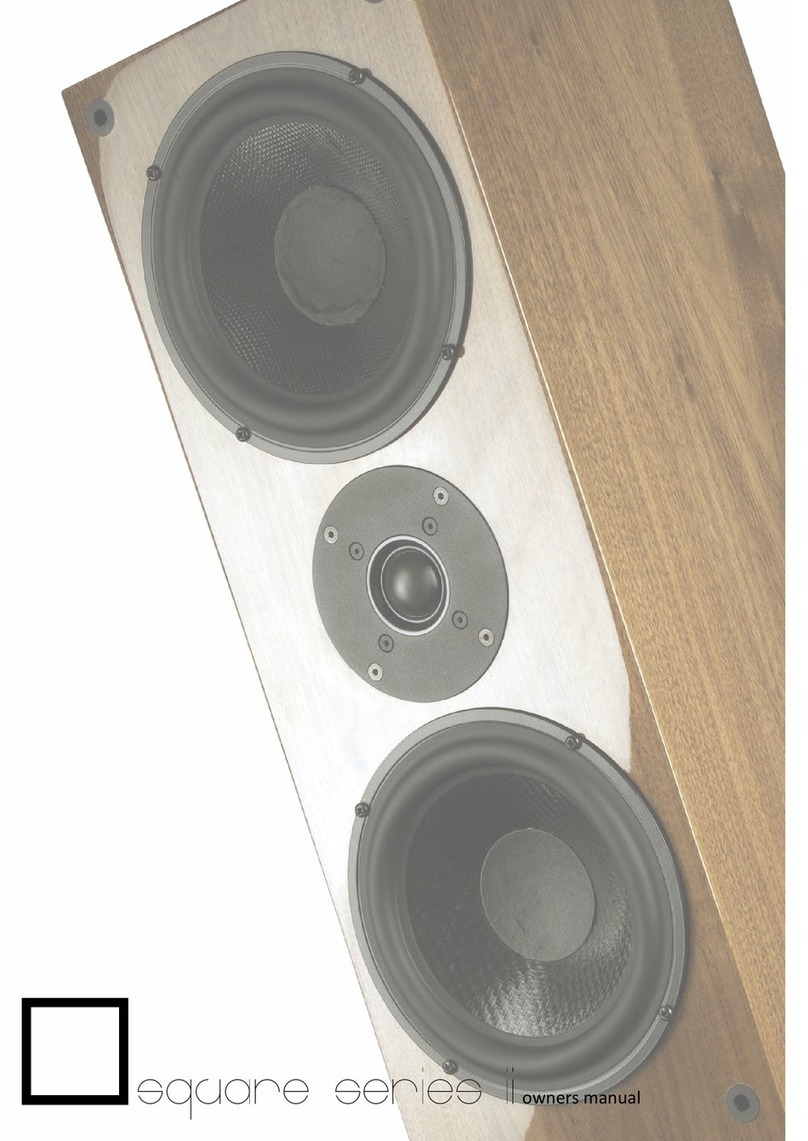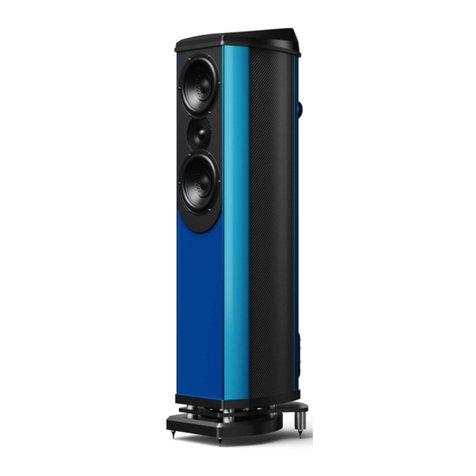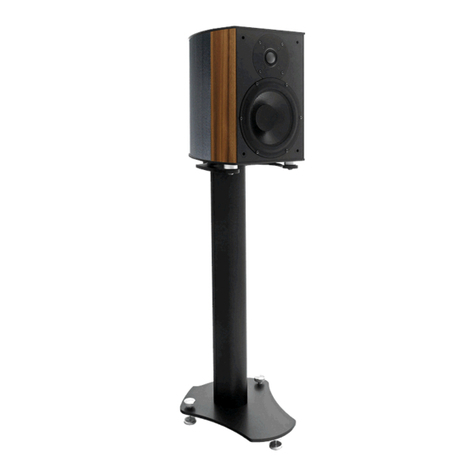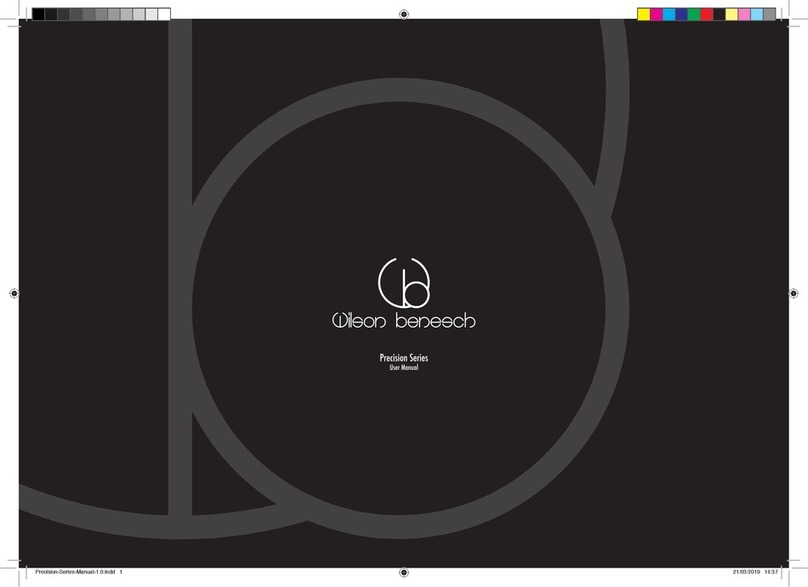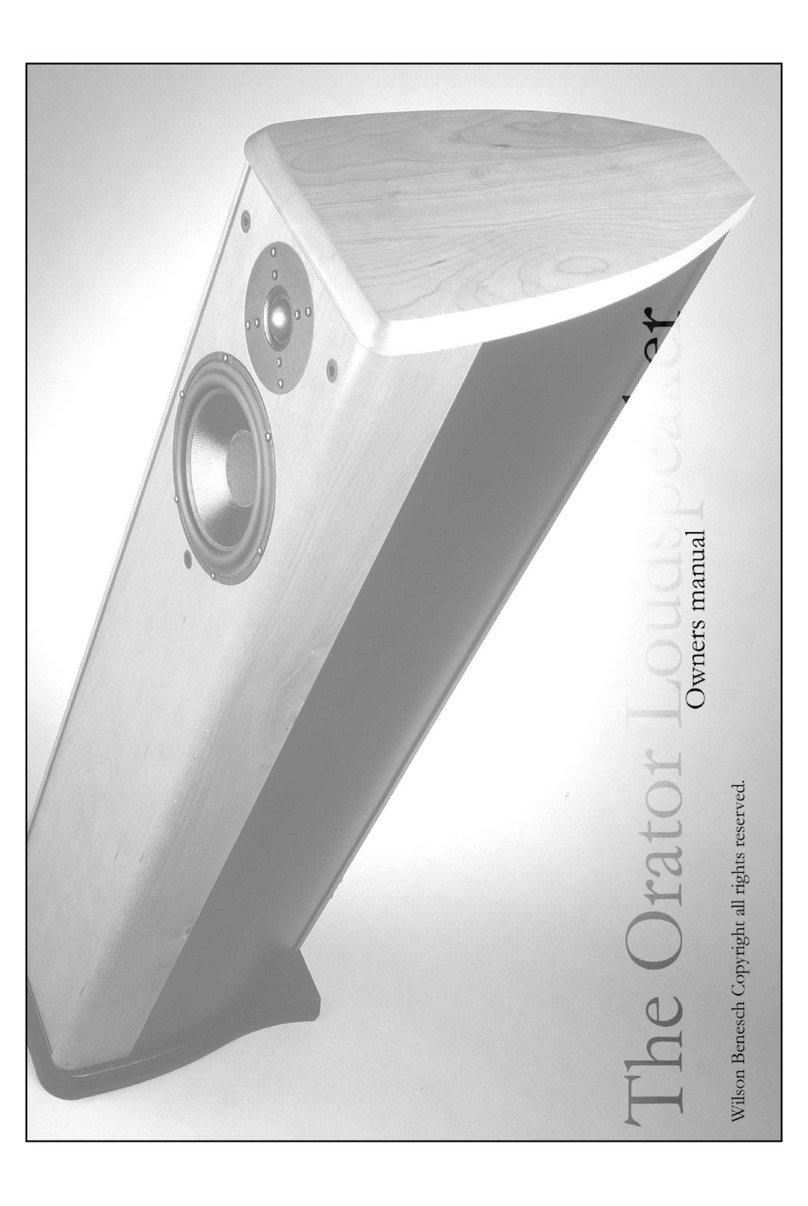Wilson Benesch has ne er been associated with the simple con entional box
solution. We were the first company in the world to set the new agenda of
fully cur ed floor standing loudspeaker systems. Wilson Benesch
loudspeakers ha e ne er been constrained by con entional production
techniques. The critical point is not that we ha e assembled the cabinet to
form a structure that is almost de oid of flat resonant sections. Nor is it that
we ha e in ented a panel to imitate the characteristics of the carbon
composite structure. It isn’t the attention to detail which sees e ery line and
cur e assembled to create a isual harmony that will blend seamlessly into
the most demanding en ironments. It isn’t the low diffraction
characteristics which cause the structure to disappear without trace. It is the
fact that we ha e shown how loudspeakers can be assembled differently. It
is this that makes
the Actor such a significant product. The ubiquitous and inadequate mass
produced box is simply not acceptable.
So why do boxes fail to meet the need? Some, but by no means all of the
reasons are listed below:
• Boxes cause internal standing wa es. Standing wa es cause
increase in output at that and multiples of that frequency,
result inaccuracy.
• Boxes are made of flat panels that are easily excited into
gi ing off their own sound, result distortion, smearing,
booming, inaccuracy.
• Boxes cause se ere diffraction at the edges informing the
listener exactly where the sound is coming from.
• Large side panels are flat reflectors. The human ear can easily
detect such simple shapes. Result, the illusion of real music
is destroyed and in its place, that a erage Hi Fi sound.
Wilson Benesch speakers ne er sound like Hi Fi. Cur ed, complex
structures, unique materials technology, profiled edge and corner facets,
angled complex top plate, careful attention to porting, solidly terminated
electrical and mechanical systems all combine to pro ide the unique sound
that is beyond the reach of con ention. Wilson Benesch loudspeakers
rejoice in their lack of con ention. Their distincti e appearance e okes the
idea of fitness for purpose. In a world of banality it is a product that will
maintain its alue and be capable of impro ement. The Isotactic polymer
another World’s first from Wilson Benesch, is the first upgrade that has
become a ailable and is now fitted as standard to all our loudspeaker
systems. The ad ent of dri er production by Wilson Benesch will see other
inno ations that will pro ide further impro ements in pursuit of excellence.
We know that you ha e a choice and we would like to thank you for
in esting in a Wilson Benesch product.
